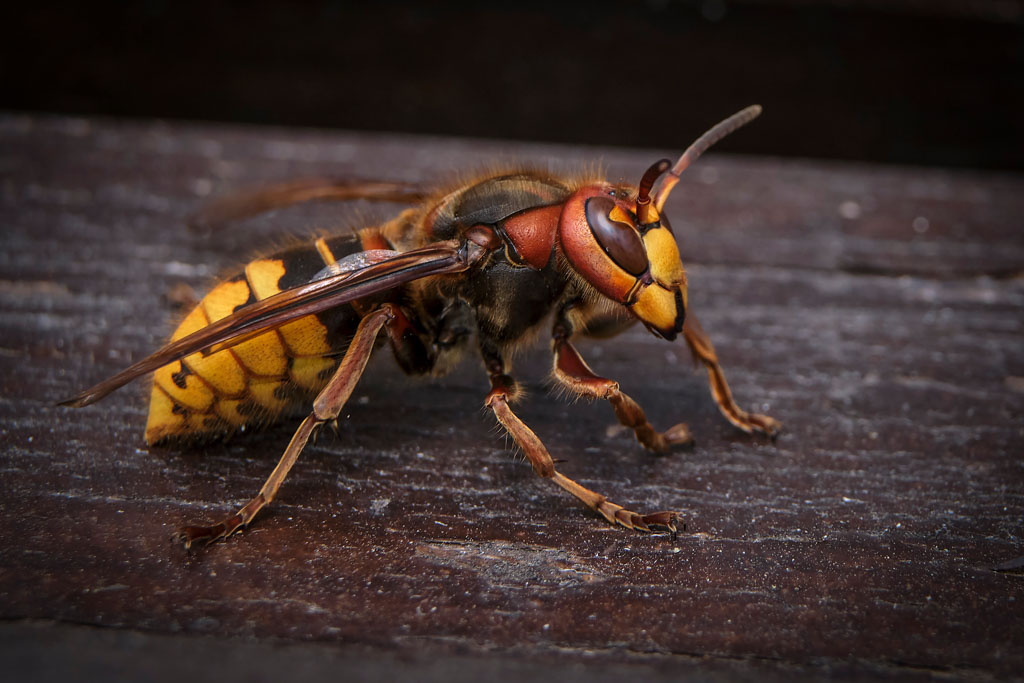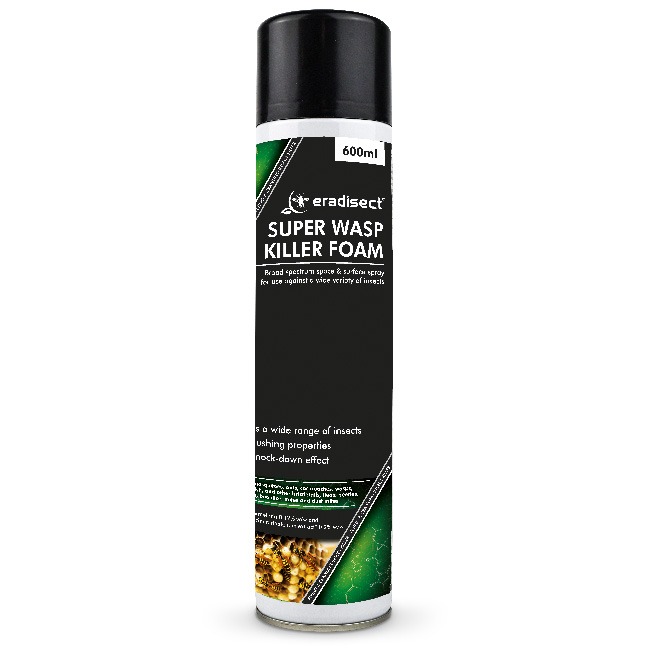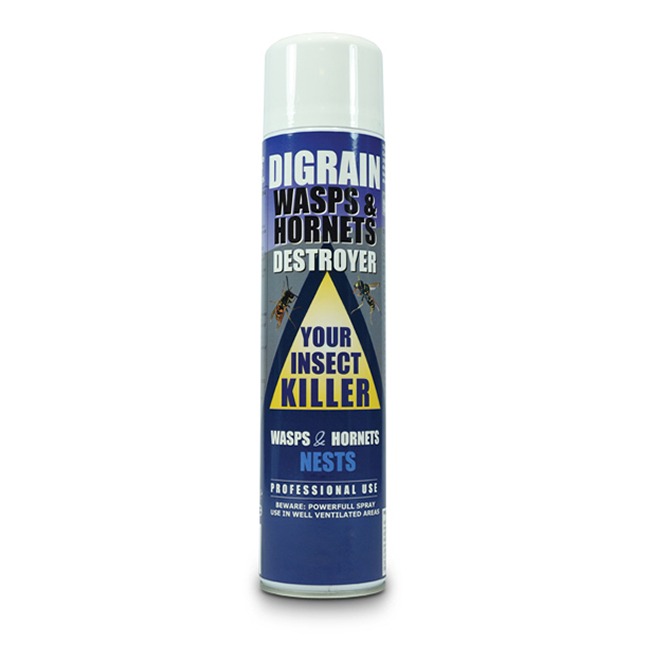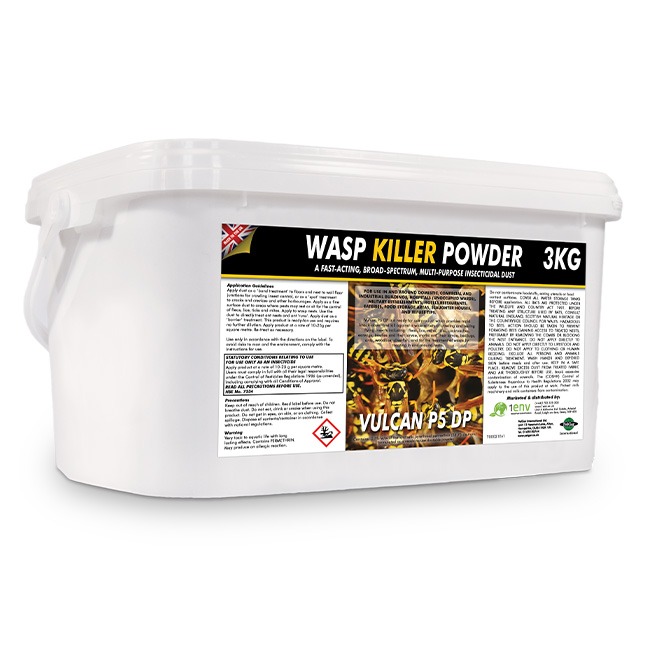European Hornet (Vespa crabro)
 |
They are Europe’s largest wasp and nest mainly in hollow trees. Occasionally they can be found in buildings. European Hornets have larger, longer stings than other species of native wasps so inject more venom, causing far more pain. however, it has been reported that the venom is less toxic to us than other wasp species.
Identification:
The adult European hornet worker is approximately 25 mm in length with yellow and brown colouration. Queens up to 35 mm. Hornets are part of the wasp family, and their life cycle is very much the same as wasps. Hornets are not as common, or as aggressive as other wasp species.
Biology:
Over-wintering queens emerge in April and nests are initiated, usually in hollow trees or similar cavities, in May with the first workers appearing around June. By midsummer a hornets’ nest will have reached its peak, with approximately 700 hornets within a nest The nest is constructed of papery material derived from rotten wood, which the hornets chew and apply as paste. New queens and males emerge from the nest September-October, mate and disperse, with the males dying and the newly-mated queens seeking over-wintering hibernation sites. Back at the nest, which may persist into November in mild years, the old queen and remaining workers eventually die-out.
Control:
Great care needs to be taken when dealing with a hornet's nest. Although hornets are less aggressive than wasps, they will defend against any threat to their nest by biting and stinging repeatedly. To locate a hornet's nest, watch the flight path of the returning workers. Hornets make a loud flight noise and can be heard from inside a building, if the hornet's nest is within the wall cavity. If the hornet's nest is near your home, keep nearby doors and windows closed. If you suspect the hornet's nest is in the loft, take great care when entering the loft space as the hornets may see this as an aggressive threat to their nest. Wasp’s nests are treated using an insecticide dust, which is applied on to or around the entrance of the nest, returning workers will then carry the insecticide further into the nest. There will be increased activity around the nest entrance for at least an hour after treatment. The nest will be completely destroyed within 24 hours. Faster acting treatment involving soaking the nest may also be possible using a liquid formulation or aerosol formulation.
Products to control European Hornet:
|
Eradisect Super Wasp Nest Killer Foam |
Digrain Wasp & Hornet Destroyer (600ml) |
Vulcan P5 DP Dust (3kg) |



